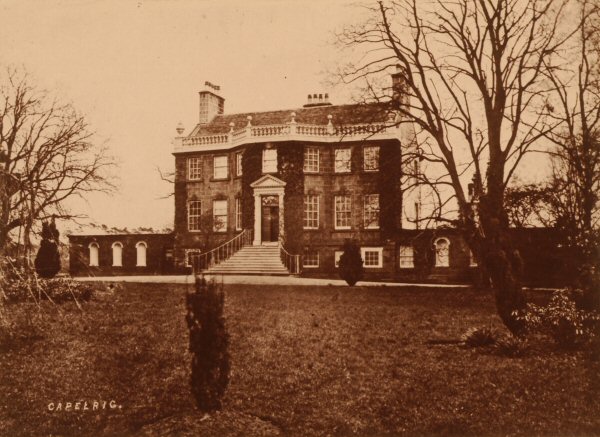

THIS House is the property of Miss Brown, and is situated in the parish of Mearns and county of Renfrew, and is six miles distant from Glasgow. In former times the lands of Capelrig belonged to the Templars and after them to the Hospitallers, who seem to have had a chapel there. (1)
These great and powerful orders of knighthood, the first of which was formed in 1118 and the latter in 1113, possessed an enormous amount of landed property in Europe. The Hospitallers are said to have had 19,000 manors, and the Templars 9,000. (2)
At the Reformation Sir James Sandelands, Knight of Malta and Preceptor of the order of the Hospitallers in Scotland, whose estates were widely extended there, early embraced the reformed religion. He resigned the property of the order into the hands of Queen Mary, and on the 24th January 1563 the Queen was pleased "in consideration of his merit and services" to erect the same into a temporal lordship, and Sir James was created Lord Torphichen. (3)
Capelrig thus fell into the hands of the Torphichen family. It was afterwards acquired by the family of Caldwell, from whom it was bought in 1765 by Robert Barclay, writer in Glasgow. (4)
Semple in his continuation of Crawford's Renfrewshire, when speaking of this Mr. Barclay, mentions, that "in the year 1769 he built a neat handsome house, three stories high, rustic cornered, with eleven steps of a stone stair up to the front door; above the front cornice is a neat balluster and rail walk, crowned with four globes, and a vase at each end; a court with three niches in front, is built at each end of the house."
There was doubtless an old house on the property before this one was built, for after describing "one of the best and convenient bee houses" he saw in the new garden, Semple goes on to say what he saw in the remains of the old garden; and where there was an old garden there was most probably an old house.
Capelrig has continued in Mr. Barclay's family ever since, and the present owner is his grand-niece.
(1) Origines Parochiales, p. 98.
(2) Cunningham's History of Church of Scotland.
(3) Douglas' Peerage.
(4) Semple's Renfrewshire.
Back to Contents